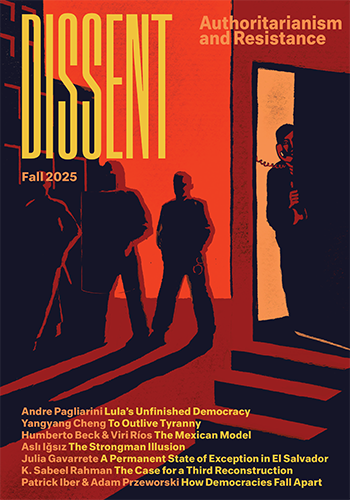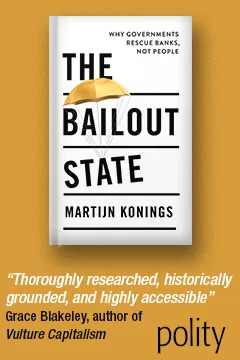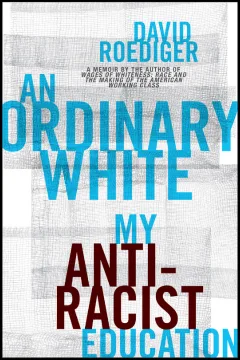The Class Politics of Black Lives Matter
The Class Politics of Black Lives Matter
To seek liberation for black people is also to destabilize inequality in the United States at large, and to create new possibilities for all who live here.

While the concerns raised by the Black Lives Matter movement reflect the experiences of most black Americans, they also extend beyond these communities. It is imperative that all progressive and left forces pay careful and respectful attention to this growing movement and its bold confrontation with state power. Its message is, in part, that there can be no real economic justice without racial justice.
Black Lives Matter, which includes nearly a dozen black-led organizations, is as much an example of a U.S.-based class struggle as Occupy Wall Street was. To focus on the black poor is not to ignore others who also endure economic inequality. In speech after speech, the leading voices of this movement have insisted that if we liberate the black poor, or if the black poor liberate themselves, we will uplift everybody else who’s been kept down. In other words, any serious analysis of racial capitalism must recognize that to seek liberation for black people is also to destabilize inequality in the United States at large, and to create new possibilities for all who live here.
It is significant that many of the leading organizers in this movement have clear class loyalties, analyses, and roots in labor and other economic justice campaigns. Jasson Perez of Black Youth Project 100 (BYP100) used to work for SEIU. The three women who launched the original Black Lives Matter hashtag in 2012, Alicia Garza, Opal Tometi, and Patrice Cullors, are all professional organizers working with domestic workers, with immigrants, and against prisons respectively. Cullors, a co-founder of anti-incarceration organization Dignity and Power Now, insists that “BLM . . . is not just about respectability politics . . . it’s about incarcerated and formerly incarcerated black people. It is about access to shelter, food, and mobility.”
In explaining her organization’s strong support for the Fight for $15 campaign, BYP100’s Charlene Carruthers insisted that the movement is “about racial justice AND economic justice.” The Dream Defenders’ Umi Selah (formerly known as Phillip Agnew) has drawn parallels between racist violence and inequality in the United States, and the violence carried out by the U.S. military overseas. In a recent interview, he said he’d like to see the U.S. government “not engage in wars where we perpetuate an economic system that ruins democracy around the world,” and that movements must understand this. Alicia Garza has stated hopefully that “for the first time in a long time, we are talking about alternatives to capitalism.”
Not only have some of the most vocal and respected members of this current cohort of organizers embraced economic justice demands, they have also recognized the many ways inequalities can exist within a movement, and have made statements about the importance of female and LGBTQ leadership. As the Black Lives Matter website reiterates, its politics go “beyond the narrow nationalism that can be prevalent within Black communities, which merely call on Black people to love Black, live Black and buy Black, keeping straight cis Black men in the front of the movement while our sisters, queer and trans and disabled folk take up roles in the background or not at all.” This is an unapologetic intersectional analysis reflecting the work of black women radicals and feminists such as Sojourner Truth, Angela Davis, Audre Lorde, Barbara Smith, bell hooks, Kimberlé Crenshaw, Beth Richie, Cathy Cohen, and Beverly Guy-Sheftal.
In a 1991 documentary entitled A Place of Rage, the black feminist poet June Jordan called upon young black activists to reclaim “rage” as a tool for social justice. Nearly a quarter of a century later, it is precisely this notion of collective, unapologetic black rage that has been the catalyst for the new movement condemning police violence against black people. The obscene cheapening of black life, made visible to millions by videos shared on social media, was key. Skilled organizers stepped in to mobilize the anger those images provoked.
But rage is the beginning, not the end point of movement building. Collective rage means we will not compromise on the question of black humanity. But rage has to be coupled with compassion, critical generosity, and love. Black activists know this, titling a recent gathering, “Now that We Got Love, What are we going to do?”
Where is the movement headed? Can it be sustained? How will it frame its goals? What kind of structures will house it? This summer there were numerous gatherings, conferences, and meetings held across the country to explore these and other questions. It gives me hope to see the radically democratic impulses of inclusivity, non-sectarianism, and collaboration in this new movement. The committed communities of organizers who have stepped forward in recent years are on the right track. What’s next depends largely on the choices they make going forward as well as a number of external factors: how ruthless will the state be in suppressing protest? Will the mainstream civil rights leadership try to usurp the leadership of the movement? How much genuine and principled solidarity will Black Lives Matter receive from the larger left?
Without challenging the right to autonomous leadership of local struggles or leadership by those most affected by racial capitalism and state violence, the larger left has to support, recognize, and embrace Black Lives Matter, not as secondary, but as central and potentially catalytic for a broad and far-reaching transformative agenda. This understanding must be linked to action. For example, Bernie Sanders’s campaign, the most progressive among the Democrats, must develop a deeper analysis of the racialized nature of U.S. capitalism. He must listen to the young activists who interrupted the Netroots conference and the August rally in Seattle to demand a stronger position against structural racism. The environmental justice movement simply cannot have speaker lineups with no black voices. Organizations that work on issues affecting people of color must also interrogate anti-blackness within their ranks. And the left media must ask how this movement can inform its coverage and analysis of all issues, not just supposedly “black” ones.
The brilliant veteran organizer Ruth Gilmore explains that the prison abolition movement is not just about abolishing unjust institutions, but about building just alternatives. Similarly the insistence of Black Lives Matter on the value of all black lives, especially the most marginalized and oppressed, is nothing less than a challenge to all of us to rethink, reimagine, and reconstruct the entire society we live in. And what a daunting and beautiful challenge that is.
Barbara Ransby is a historian, author, and longtime activist. She is the author of the acclaimed biography Ella Baker and the Black Freedom Movement, a co-founder of the Black Radical Congress in 1998, editor of the journal Souls, and Professor and Director of the Social Justice Initiative at the University of Illinois at Chicago.
This article is part of Dissent’s special issue of Arguments on the Left. To read more arguments in the issue, click here.
[contentblock id=subscribe-plain]






